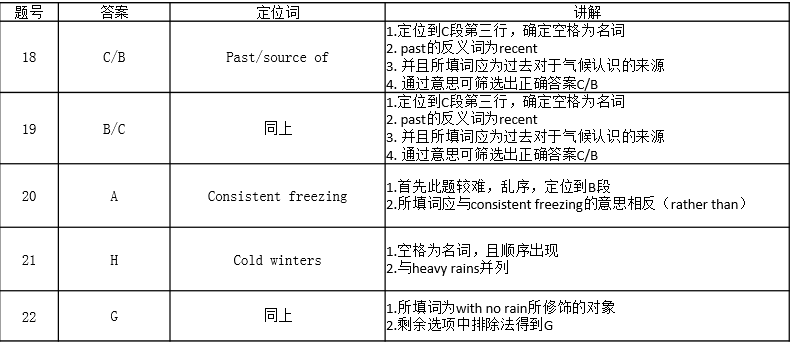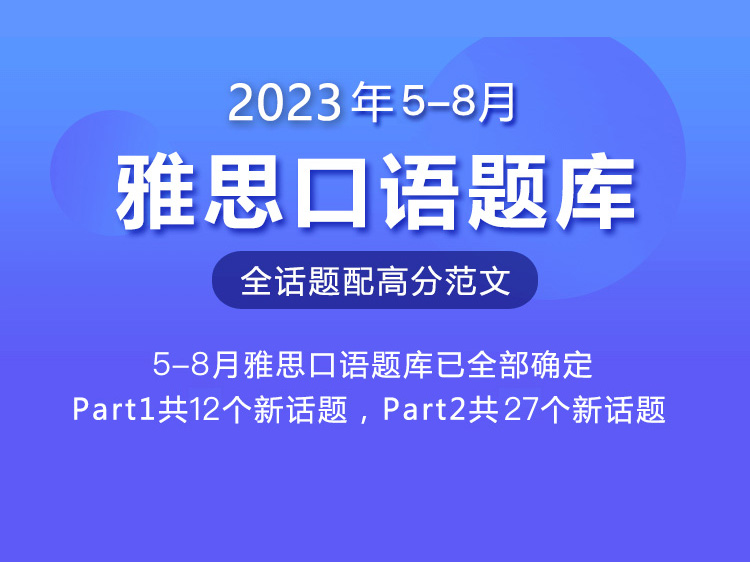【小站课堂】雅思阅读选词摘要题讲解--The Little Ice Age
- 2016年10月09日13:30 来源:小站教育作者:小站雅思编辑
- 参与(2) 阅读(44171)
小站独家,雅思阅读机经真题解析。一切患有雅思阅读刷题强迫症的烤鸭,请看这里。小站精心整理了一批雅思阅读机经真题。如果你的剑桥雅思阅读已是烂熟于心,那么这一系列的雅思阅读机经真题真的很适合你,搭配上绝对原创的讲解,这等阅读大餐,还等什么!
THE LITTLE ICE AGE
A
This book will provide a detailed examination of the Little Ice Age and other climatic shifts, but, before I embark on that, let me provide a historical context. We tend to think of climate - as opposed to weather - as something unchanging, yet humanity has been at the mercy of climate change for its entire existence, with at least eight glacial episodes in the past 730,000 years. Our ancestors adapted to the universal but irregular global warming since the end of the last great Ice Age, around 10,000 years ago, with dazzling opportunism. They developed strategies for surviving harsh drought cycles, decades of heavy rainfall or unaccustomed cold; adopted agriculture and stock-raising, which revolutionized human life; and founded the world's first pre-industrial civilizations in Egypt, Mesopotamia and the Americas. But the price of sudden climate change, in famine, disease and suffering, was often high.
B
The Little Ice Age lasted from roughly 1300 until the middle of the nineteenth century. Only two centuries ago, Europe experienced a cycle of bitterly cold winters; mountain glaciers in the Swiss Alps were the lowest in-recorded memory, and pack ice surrounded Iceland for much of the year. The climatic events of the Little Ice Age did more than help shape the modern world. They are the deeply important context for the current unprecedented global warming. The Little Ice Age was far from a deep freeze, however; rather an irregular seesaw of rapid climatic shifts, few lasting more than a quarter-century, driven by complex and still little understood interactions between the atmosphere and the ocean. The seesaw brought cycles of intensely cold winters and easterly winds, then switched abruptly to years of heavy spring and early summer rains, mild winters, and frequent Atlantic storms, or to periods of droughts, light northeasterly winds, and summer heat waves.
C
Reconstructing the climate changes of the past is extremely difficult, because systematic weather observations began only a few centuries ago, in Europe and North America. Records from India and tropical Africa are even more recent. For the time before records began, we have only 'proxy records' reconstructed largely from tree rings and ice cores, supplemented by a few incomplete written accounts. We now have hundreds of tree-ring records from throughout the northern hemisphere, and many from south of the equator, too, amplified with a growing body of temperature data from ice cores drilled in Antarctica, Greenland the Peruvian Andes, and other locations. We are close to knowledge of annual summer and winter temperature variations over much of the northern hemisphere going back 600 years.
D
This book is a narrative history of climatic shifts during the past ten centuries, and some of the ways in which people in Europe adapted to them. Part One describes the Medieval Warm Period, roughly 900 t0 1200. During these three centuries, Norse voyagers from Northern Europe explored northern seas, settled Greenland, and visited North America. It was not a time of uniform warmth, for then, as always since the Great Ice Age, there were constant shifts in rainfall and temperature. Mean European temperatures were about the same as today, perhaps slightly cooler.
E
It is known that the Little Ice Age cooling began in Greenland and the Arctic in about 1200. As the Arctic ice pack spread southward, Norse voyages to the west were rerouted into the open Atlantic, then ended altogether. Storminess increased in the North Atlantic and North Sea. Colder, much wetter weather descended on Europe between 1315 and 1319, when thousands perished in a continent-wide famine. By 1400, the weather had become decidedly more unpredictable and stormier, with sudden shifts and lower temperatures that culminated in the cold decades of the late sixteenth century. Fish were a vital commodity in growing towns and cities, where food supplies were a constant concern. Dried cod and herring were already the staples of the European fish trade, but changes in water temperatures forced fishing fleets to work further offshore. The Basques, Dutch, and English developed the first offshore fishing boats adapted to a colder and stormier Atlantic. A gradual agricultural revolution in northern Europe stemmed from concerns over food supplies at a time of rising populations. The revolution involved intensive commercial farming and the growing of animal fodder on land not previously used for crops. The increased productivity from farmland made some countries self-sufficient in grain and livestock and offered effective protection against famine.
F
Global temperatures began to rise slowly after 1850, with the beginning of the Modern Warm Period. There was a vast migration from Europe by land-hungry farmers and others, to which the famine caused by the Irish potato blight contributed, to North America, Australia, New Zealand, and southern Africa. Millions of hectares of forest and woodland fell before the newcomers' axes between 1850 and -1890, as intensive European farming methods expanded across the world. The unprecedented land clearance released vast quantities of carbon dioxide into the atmosphere, triggering for the first time humanly caused global warming. Temperatures climbed more rapidly in the twentieth century as the use of fossil fuels proliferated and greenhouse gas levels continued to soar. The rise has been even steeper since the early 1980s. The Little Ice Age has given way to a new climatic regime, marked by prolonged and steady warming. At the same time, extreme weather events like Category 5 hurricanes are becoming more frequent.
Questions 18-22
Complete the summary using the list of words, A-I, below.
Write the correct letter, A-I, in boxes 1-5 on your answer sheet.
Weather during the little Ice Age
Documentation of past weather conditions is limited: our main sources of knowledge of in the distant past are 18_____and 19_____.We can deduce that the Little Ice Age was a time of 20____, rather than of consistent freezing. Within it there were some periods of very cold winters, others of 21 ______ and heavy rain, and yet others that saw 22 _____ with no rain at all.
A climatic shifts B ice cores C tree rings
D glaciers E interactions F weather observations
G heat waves H storms I written accounts
真题精讲:
长难句讲解:
1. The Little Ice Age was far from a deep freeze, however, rather an irregular seesaw of rapid climatic shifts, few lasting more than a quarter-century,driven by complex and still little understood interactions between the atmosphere and the ocean.
参考译文:然而,小冰期远非一个深度冰冻期,它实际上是由大气与海洋之间复杂难解的相互作用引起的,持续期普遍短语25年的一系列不规则气候巨变的集合。
知识点:本题是summary题,far from表示“远不是”,相当于“not merely”,因此这句话要强调的部分在however后面,即Little Ice Age是一个气候变化迅速的时代。
2. We are close to a knowledge of annual summer and winter temperature variations over much of the northern hemisphere going back 600 years.
参考译文:我们很快就要掌握北半球大部600年前的年度冬夏温度的变化了。
知识点:We are close to (主谓)knowledge宾语介词短语形式跟着定语 a knowledge of annual summer and winter temperature variations over much of the northern hemisphere going back 600 years.(部修饰说明前面整定语其going back 600 years置定语修饰northern hemisphere)
3. The revolution involved intensive commercial farming and the growing of animal fodder on land not previously used for crops.
参考译文:这次革命带来了集中的商业耕种,以及为了种植动物饲料而在非农作物用地上进行的土地开垦。
知识点:该句主干为the revolution involved---and---之后的not previously used for crops用来修饰land。












































